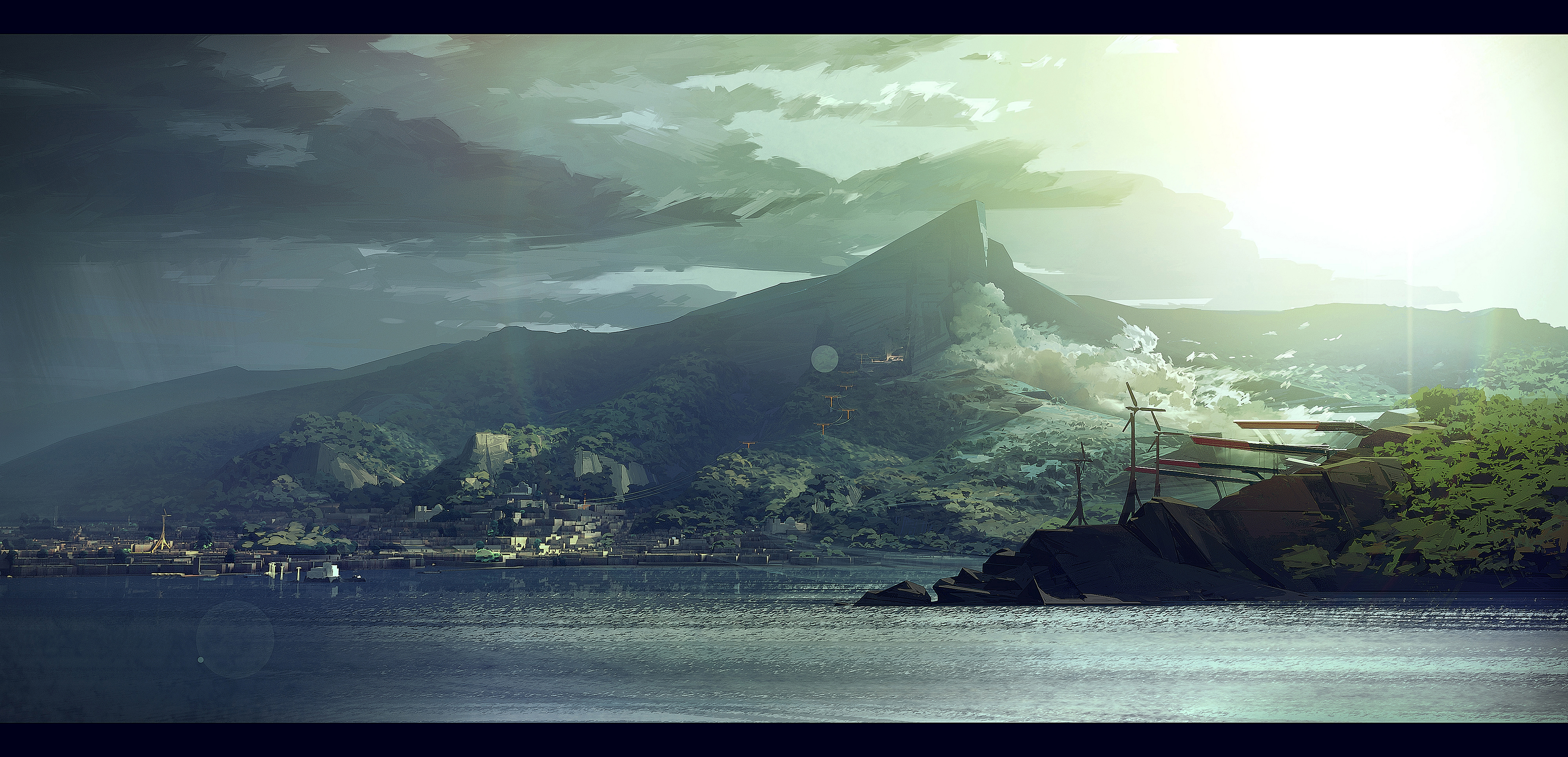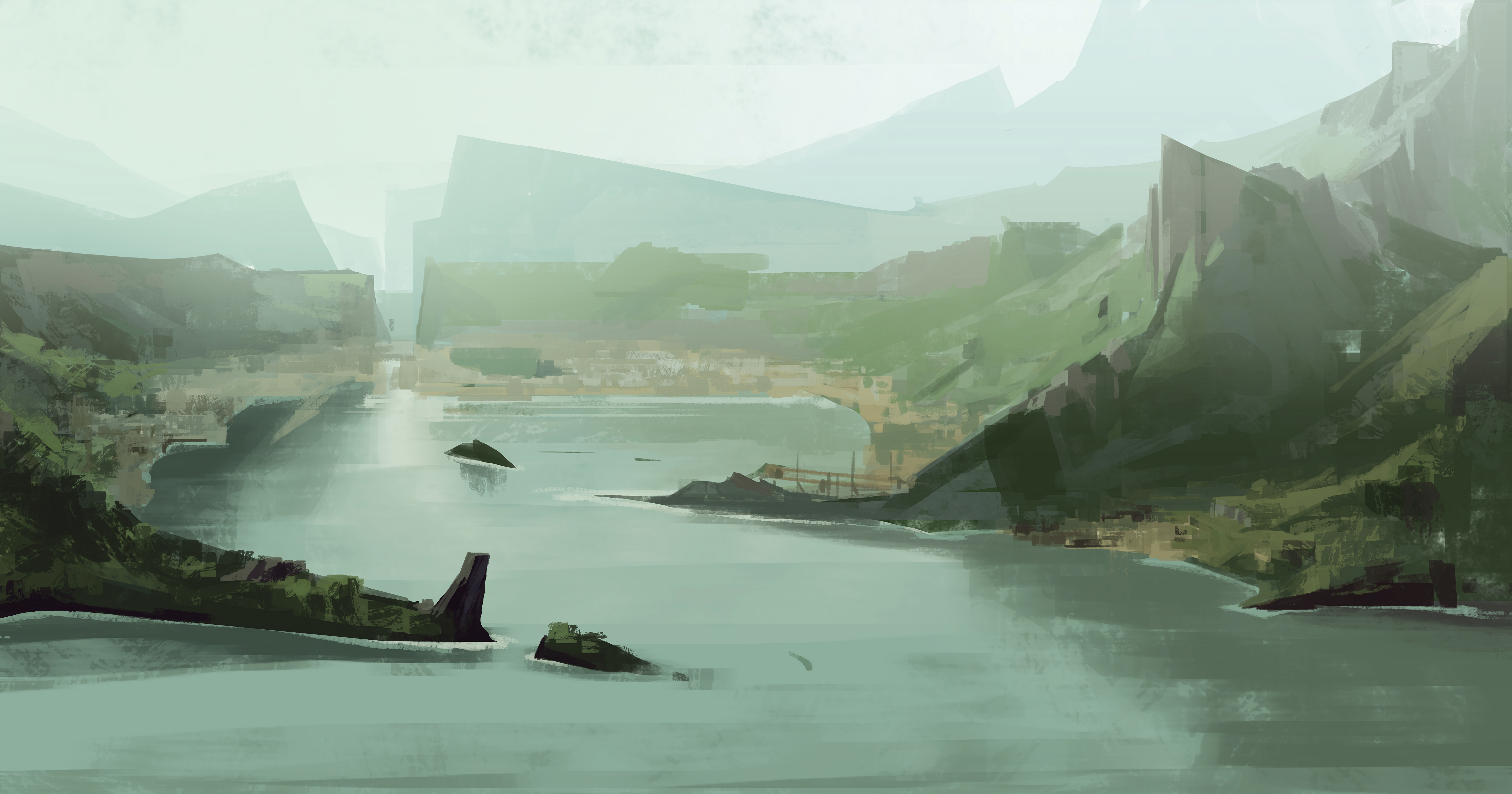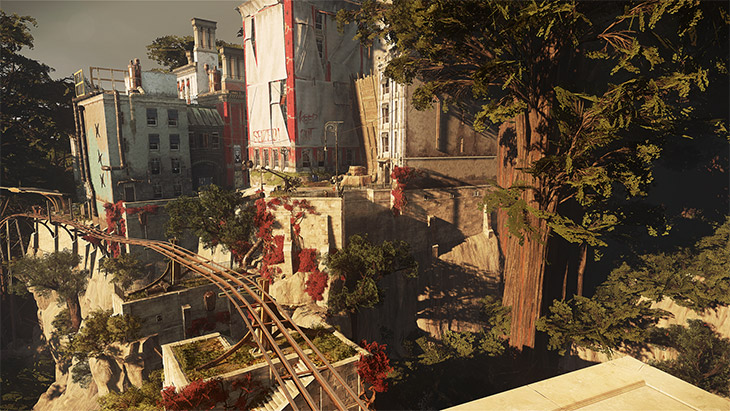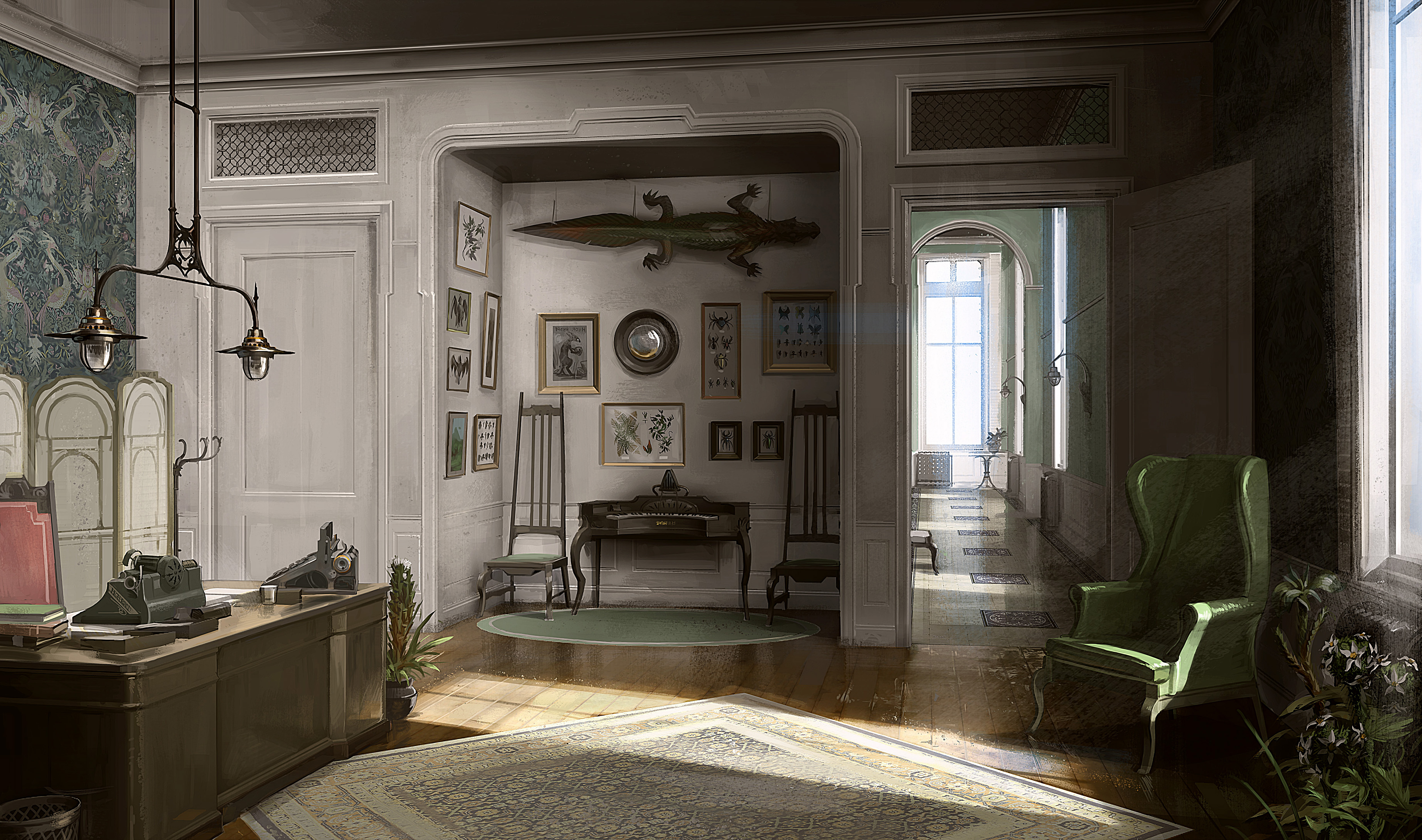Balancing art direction and level design in Dishonored 2
A chat with art director Sebastian Mitton about balancing gameplay, design and art.

As you can probably imagine, balancing art direction with the practical aspects of level design is not easy. That seems especially true for immersive sims, where the player expects the freedom to improvise, to subvert expectations and to feel clever when they’ve approached a problem in a less-than-obvious manner.
The Dishonored series exemplifies this. As I pointed out in my preview of Dishonored 2's Clockwork Tower mission a few months back, Arkane Studios’ approach to stealth is impressively organic. Rarely does an overtly game-like element intrude upon the coherence and plausibly of the world. You’ll find a scarcity of oversized air vents and conveniently forgotten waist-high shipping containers in Dunwall, or Karnaca, but that richness does not come easily.
“It’s super difficult,” Art Director Sebastian Mitton told me at PAX Australia last week, ahead of Dishonored 2’s Friday release. I’d asked him whether it was tricky to get the art and level design teams to get along all the time. “We have a good collaboration between the level designer and architect, who puts the fun in it—they put the AI in, they incorporate the story, the lore and everything. We discuss and we fight together during four years to get the best result that we can.
“So yeah, we fight, but it’s great to collaborate because when it works—when you see something that’s stunning visually but also perfect in terms of gameplay—it’s good. But it’s really hard.”


How's Dishonored 2 run on PC? Here are some early impressions based on a day with the game.
Modern game development is a hugely complex balancing act, where a tweak in one area might bring the tower crashing down in another. One example of art direction and broader design which clashed was on the matter of the Clockwork Soldiers – the mechanical sentries strewn throughout the aforementioned tower. According to Mitton, there was some debate over how tall they would be.
“We fought over the Clockwork Soldier,” he said. “He was two metres high and Harvey [Smith] wanted it taller. But we were like, ‘We have doors that are two metres, we can’t do it taller’. Someone picked up the document and pointed out that we only have two doors that are that tall, and these are the restroom doors: the Clockwork Soldier will never go there. So in the end, we did the new Clockwork.”
So the finer details of level design can affect larger elements, like the dimensions of enemies, but Mitton’s vision for the new hub world of Karnarca – a place equal parts inspired by European Mediterranean cities and Havana, Cuba – ended up presenting even more functional obstacles than was first apparent.
Keep up to date with the most important stories and the best deals, as picked by the PC Gamer team.
“We now have rooftops that are flat. In Havana, people have a great life on rooftops, they eat, have parties etc. So when we applied that to Karnaca, it raised the question: if I go to the rooftops, the guards should be able to follow me up there. So that changed the layout, adding a new floor on the top of already tall buildings. It was kind of a nightmare to set up in the beginning, but then it opened up a new condition.”

Meanwhile, the seamlessness of Dishonored 2, the way loading screens don’t interrupt the game during transitions between open-world sections and missions, proved problematic. “It was challenging not to have guards, for example, follow you for a kilometre into a mission,” Mitton said.
Another pain? Windmills. These are scattered throughout Kanarca, and while they were initially designed to look pretty, it was inevitable that they also needed interactivity. “We had big, giant windmills, but also smaller ones. This was a nightmare because [our motto is that] we say ‘Yes’ to the player. So looking at the windmills, if I shoot at them, I should be able to break it—but the blades are really thick, so I was like, ‘You cannot break it in one bullet, maybe with a grenade.’ Okay, but now [that you can break it], do we also need a lever to deactivate it?
“Each time you show something really cool visually, the level designer can say, ‘I want to take it for gameplay purposes’, and it can break all your visual design. It’s always really crazy when we say yes to a new rule of gameplay, [because] it can affect everything in the game. If a new rule is written, we need to embrace it and sometimes re-do things elsewhere.”

Mitton says the move to the new Void Engine, which is based around id Tech 5, allowed the studio to be more demanding when it came to finer details – and finer details are very important in Dishonored. While some imperfections lingered in the Unreal Engine-powered original, Mitton says that “each time I saw something that was a bit wrong or just a detail that I didn’t like, I’d have it corrected.”
So yes, Dishonored 2 will likely be a very beautiful videogame, and the aesthetic Mitton shaped in the original helps to define it. But when a game is this painterly, does it grate that it’s also so violent?
Mitton is quick to point out that you don’t have to kill anyone. “But yes, that’s true, but I think there’s a beauty in the violence," he said. "Maybe it’s politically incorrect to encourage the violence [in the game], but when you look at the news outside, it is everywhere, this is a real part of life. We have a lot of discussion about violence and the core aspect of it.
“But it’s a different thing: the violence, I don’t compare it to the beauty of the art. I don’t compare the style of the game with the violence — this is just the way I want to do art.”

Shaun Prescott is the Australian editor of PC Gamer. With over ten years experience covering the games industry, his work has appeared on GamesRadar+, TechRadar, The Guardian, PLAY Magazine, the Sydney Morning Herald, and more. Specific interests include indie games, obscure Metroidvanias, speedrunning, experimental games and FPSs. He thinks Lulu by Metallica and Lou Reed is an all-time classic that will receive its due critical reappraisal one day.

